Phonics Teaching Resources
Make teaching phonics easy with printable phonics worksheets, activities, games and more designed for primary teachers.
This collection of Australian curriculum-aligned teaching resources has been carefully reviewed by our expert teaching team to make sure every resource is classroom-ready — so we can make your lesson planning easier!
New to teaching phonics, or just looking for new ways to engage your students? Read on for a primer from our teacher team!
What Is Phonics?
You've likely heard the word 'phonics' thousands of times throughout your own education and maybe on one of those old as from the '90s. But what is phonics, exactly?
Phonics is technically defined as the systematic instruction of the relationships between letters and sounds in written language. But that's a mouthful, isn't it? More simply, phonics is the word we use to refer to the method of teaching reading by focusing on the relationship between written letters and the sounds they represent.
In phonics, kids learn how to decode written words by recognising the sound-symbol correspondence.
Phonics vs. Phonemic Awareness
When we start talking about letters and their sounds, we start to wander into phonemic awareness territory. So what's the difference?
The words phonics and phonemic are similar, and the two concepts are — surprise, surprise — related. But there are key differences.
Phonemic awareness is essentially the ability to identify and manipulate individual sounds — aka phonemes — in spoken language. It's those individual sounds and their correspondence to the letter symbols that can be used by kids to then decode written words.
So students learn to recognise the individual sounds of spoken language (phonemes) and how these sounds can be represented by letters (graphemes) in written language. Then they apply this knowledge to decode written words by understanding the sound-symbol correspondence.
Consider this example:
- Let's say your student can identify the separate sounds in a spoken word such as 'cat' (i.e., /k/ /a/ /t/). That's phonemic awareness.
- Now let's say you're teaching that same student that the letter 'c' represents the /k/ sound and that the letter 'a' represents the /a/ sound, and that these sounds combine to form the word 'cat.' That's phonics!
How to Teach Phonics in Primary School
OK, you probably already know that phonics is all about teaching word recognition via grapheme-phoneme associations and letter-sound correspondences.
It’s a means of teaching early readers the pieces that make up a word so they can blend them together to decode the English language as readers and writers.
But how do you teach it?
In the earliest stages, phonics instruction typically begins with teaching students the most common letter-sound relationships. You start with consonants, then move on to vowels, then consonant blends.
Students then learn to sound out words by decoding the letters and blending the sounds together to form words.

Phonics Vocabulary Terms to Remember
The English language system is one of the hardest to teach and learn, so how do you teach phonics? Let’s start with the phonics vocabulary.
- For starters, there are 26 letters that create approximately 44 phonemes, the word for the individual speech sounds that make up words. Put together, phonemes make words. OK, easy enough, right?
- Well, these phonemes can be written in more than 200 different letter combinations, known as graphemes. Graphemes can be made up of 1 letter (such as 'p' in 'pig'), 2 letters (such as 'gh' in ghost), 3 letters (such as 'igh' in night), or 4 letters (such as 'ough' in rough).
- Then there are digraphs or two letters that work together to make one sound — such as “ph” in graph. But wait, isn’t that a grapheme? Yup, a digraph is a type of grapheme.
- So is a trigraph, trigraphs, aka three letters that work together to make one sound, such as 'dge' in edge.
- And if you’re teaching phonics, you can’t forget dipthongs, the name for a sound that is formed by the combination of two vowels in a single syllable, such as 'ou' in loud.
Most students will spend foundation, year 1 and even year 2 getting a handle on all phonics elements!
- Plus Plan
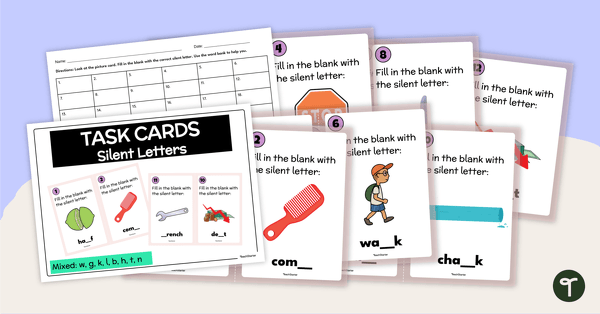
Silent Letters Task Cards
Identify the missing silent letters in common words with this set of 16 task cards.
- Plus Plan
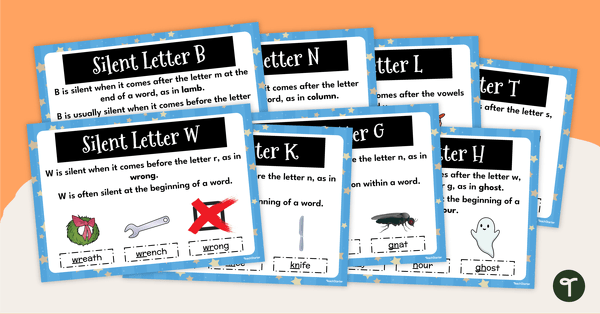
Silent Letters Poster Pack
Remind your students about the most commonly used silent letters with this set of classroom display posters.
- Plus Plan
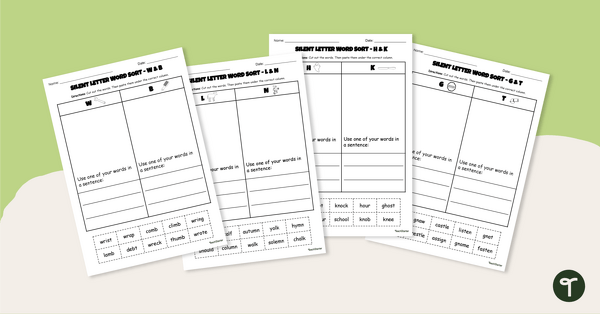
Silent Letters Word Sort - Cut and Paste Worksheets
Identify silent letters in words with this set of four cut-and-paste worksheets.
- Plus Plan
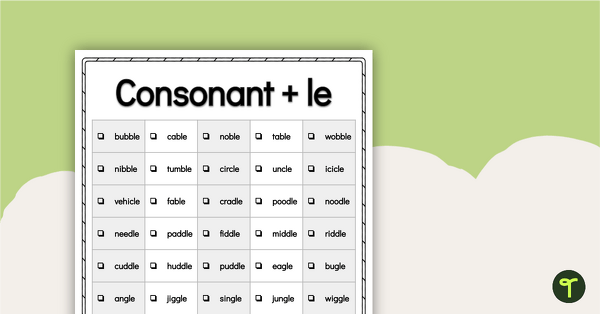
Word Study List - Consonant + LE
Introduce and explore two-syllable words containing a consonant + le syllable with this extensive list.
- Plus Plan
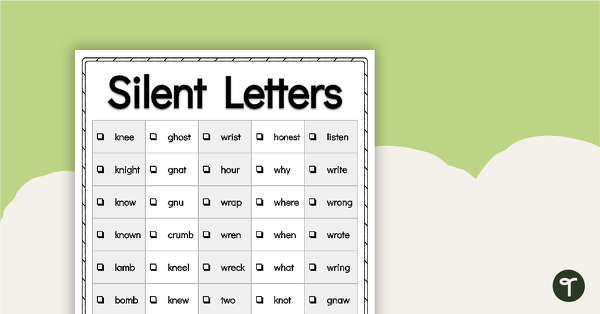
Word Study List - Silent Letters
Introduce and explore words containing silent letters with this extensive list of words.
- Plus Plan
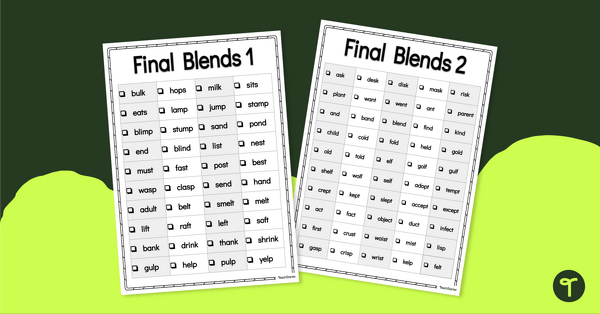
Word Study List - Final Blends
Introduce and explore words containing final blends with this extensive list of words.
- Plus Plan
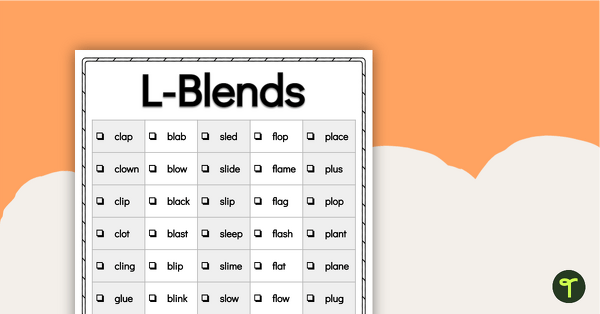
Word Study List - L Blends
Introduce and explore words containing an initial l-blend with this extensive list of words.
- Plus Plan
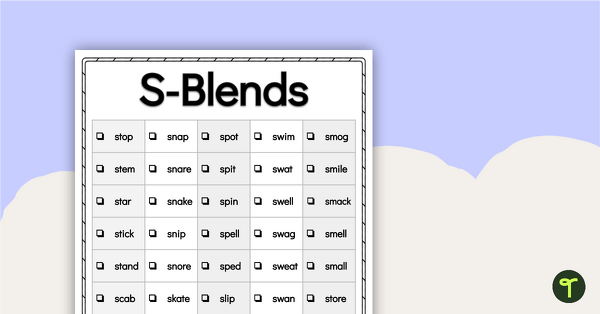
Word Study List - S Blends
Introduce and explore words containing an initial s-blend with this extensive list of words.
- Plus Plan
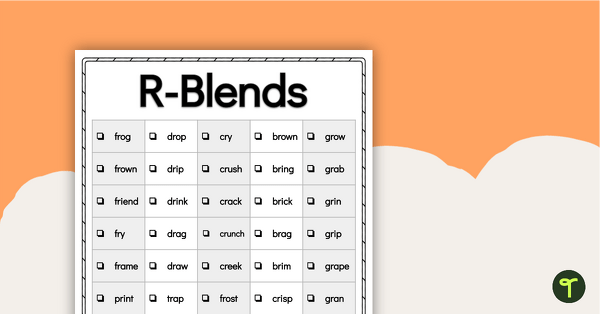
Word Study List - R Blends
Introduce and explore words containing an initial r-blend with this extensive list of words.
- Plus Plan
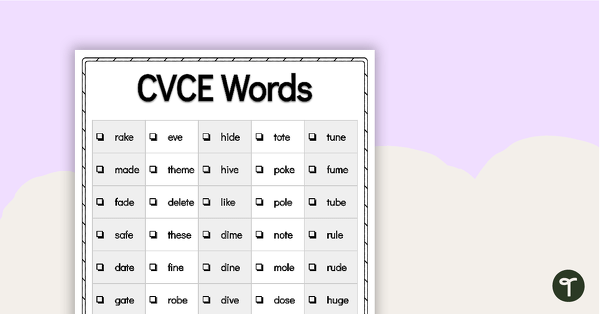
Word Study List - CVCE Words
Introduce and explore words containing the ‘magic e’ with this extensive list of CVCE words.
- Plus Plan
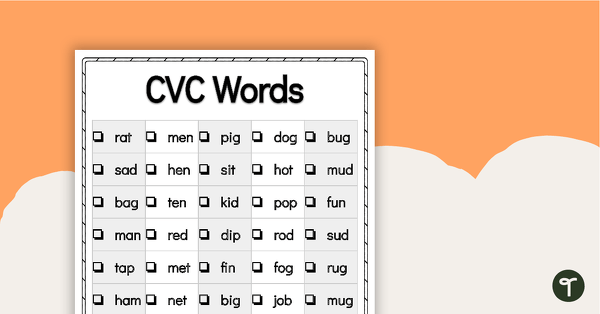
Word Study List - CVC Words
Introduce and explore consonant-vowel-consonant words with this extensive list of CVC words.
- Plus Plan
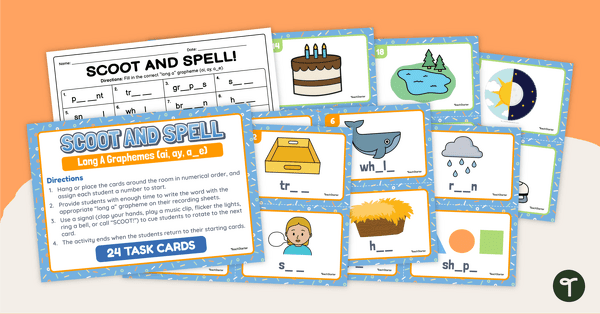
Long A Graphemes - SCOOT! Task Cards
Explore words containing graphemes that make the ‘long a’ sound with this active classroom game that will get your students moving!
- Plus Plan
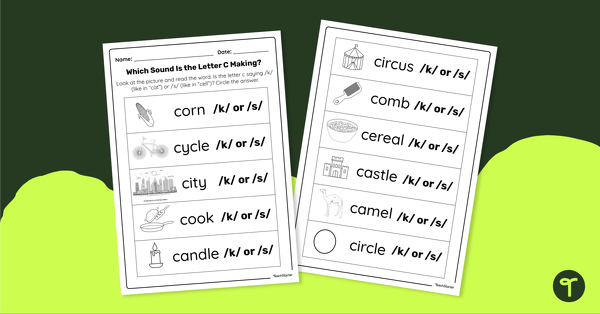
Which Sound? Worksheet - The Letter C
Practise identifying the different sounds made by the letter C with this printable two-page worksheet.
- Plus Plan
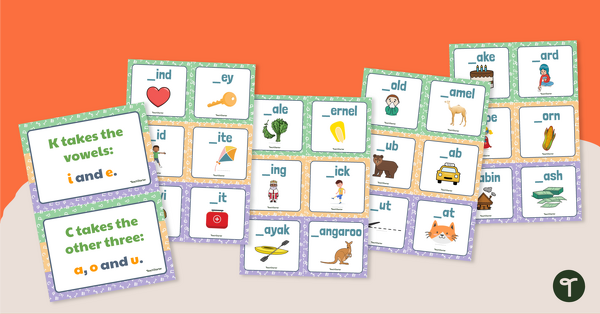
Which Letter? Sorting Activity - K or C
Practise identifying when to begin words with the letter K or the letter C with this hands-on sorting activity.
- Plus Plan
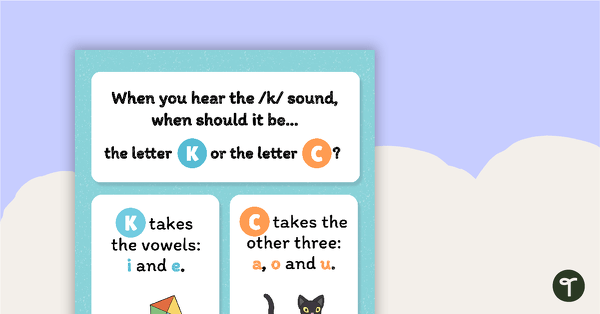
Which Letter? Poster - K or C
Help your students remember when to use the letter K and when to use the letter C with this colourful classroom poster.
- Plus Plan
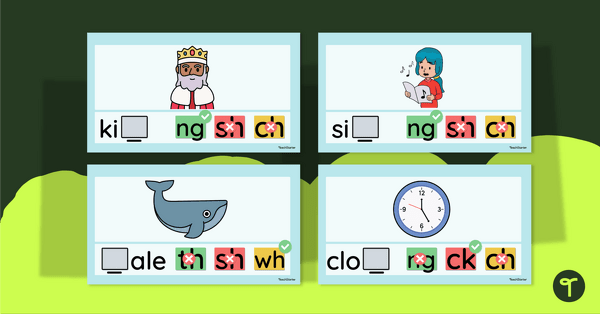
Which Consonant Digraph Is It? Interactive Activity
Review consonant digraphs with this comprehensive drag-and-drop interactive activity.
- Plus Plan
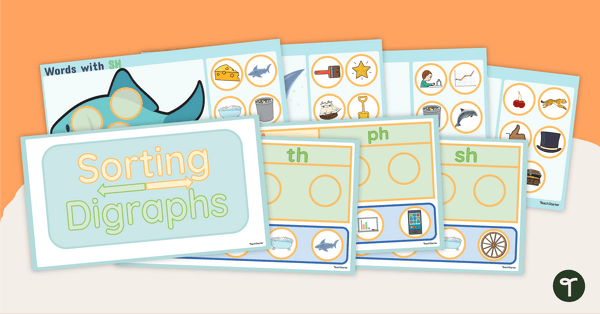
Consonant Digraphs - Interactive Sorting Activity
Practise identifying beginning and ending consonant digraphs with this interactive sorting activity.
- Plus Plan
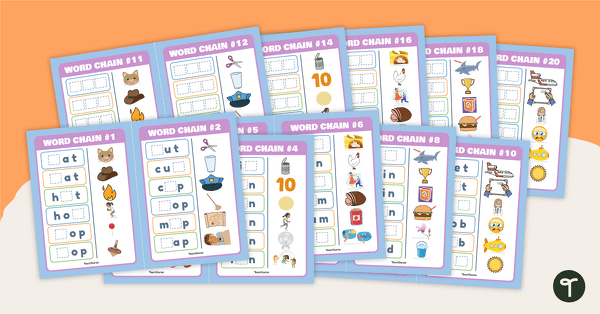
CVC Word Chain Task Cards
Manipulate the individual phonemes in CVC words to create new ones with this set of differentiated task cards.
- Plus Plan
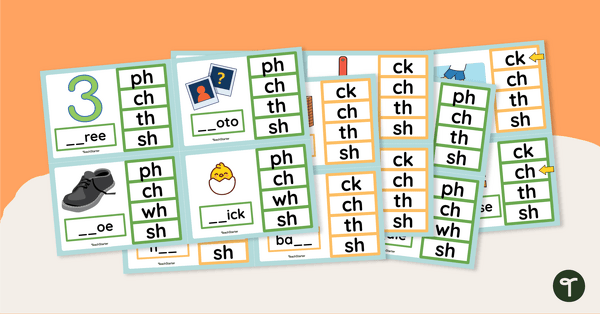
Consonant Digraph Peg Cards
Explore consonant digraphs at the beginning and end of words with these hands-on peg cards.
- Plus Plan
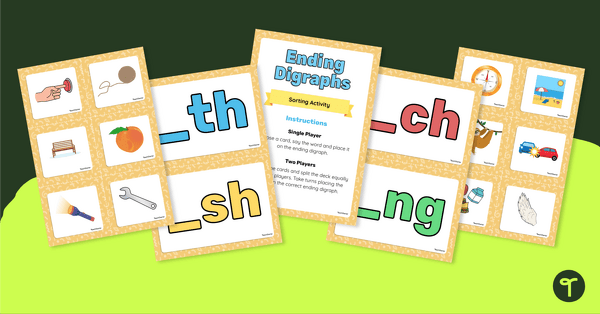
Ending Consonant Digraphs Sorting Activity
Explore words that contain a final consonant digraph with a set of 24 picture sorting cards.
- Plus Plan
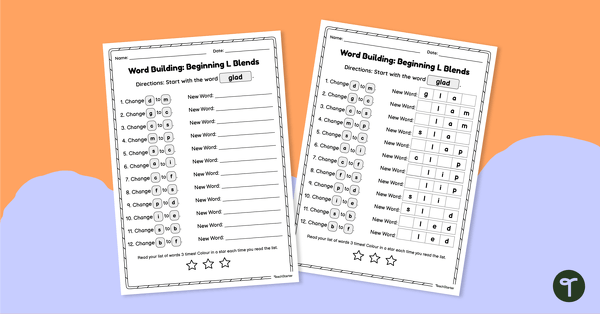
Word Chain Worksheet - Beginning L Blends
Manipulate the individual phonemes in words to create new ones with this differentiated word-building worksheet.
- Plus Plan
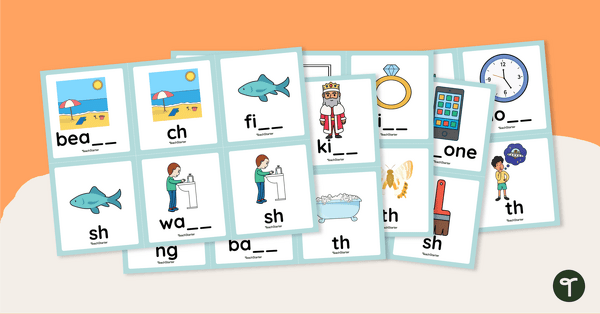
Consonant Digraphs Match-Up Activity
Complete words using the correct consonant digraph with this set of match-up cards.
- Plus Plan
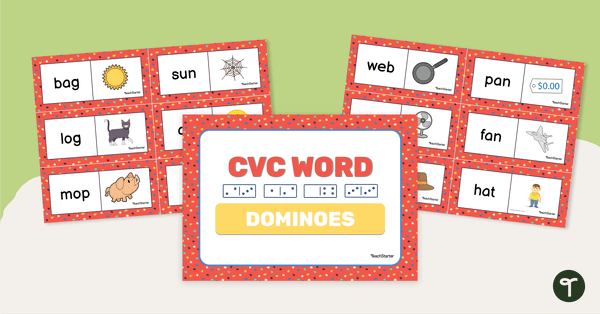
CVC Word Dominoes
Practise decoding CVC words with this set of 30 dominoes.
- Plus Plan
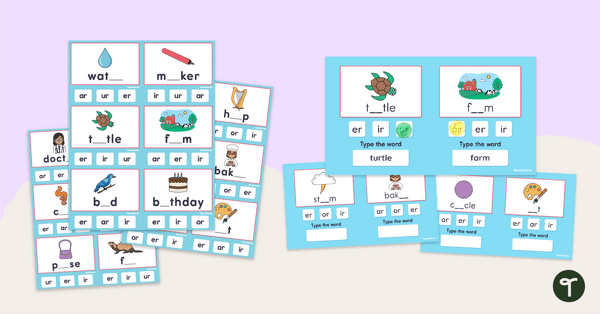
R-Controlled Vowel Peg Cards
Build an engaging literacy center or station activity around r-controlled vowels with these digital and/or printable r-controlled vowel clip cards.
- Plus Plan
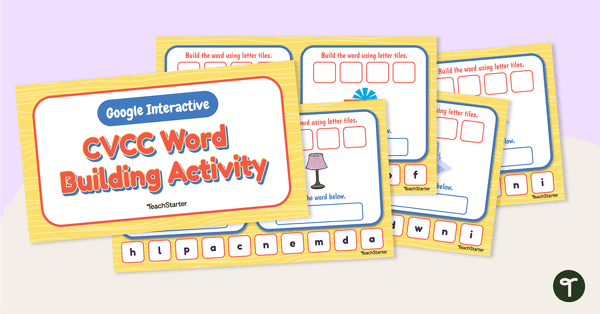
CVCC Word Building - Google Slides Interactive Activity
Practise spelling and reading CVCC words by identifying and blending sounds using this interactive Google Slides activity.
- Plus Plan
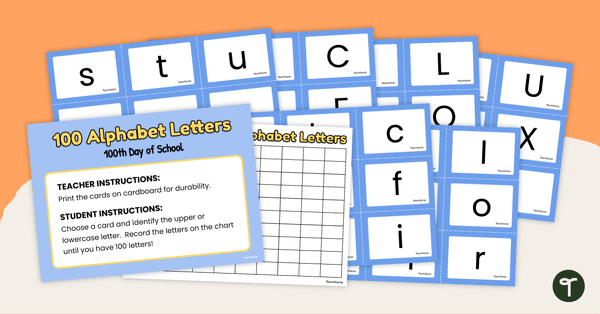
100 Alphabet Letters
Practise counting to 100 by 1’s with upper and lowercase alphabet cards and blank hundreds board.
- Plus Plan
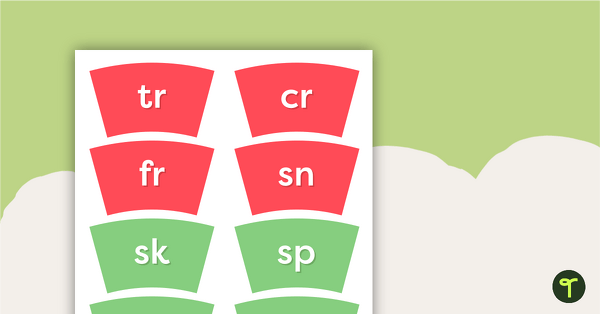
Classroom Spinner Template - Blends
Classroom spinner template focusing on blends.
- Plus Plan
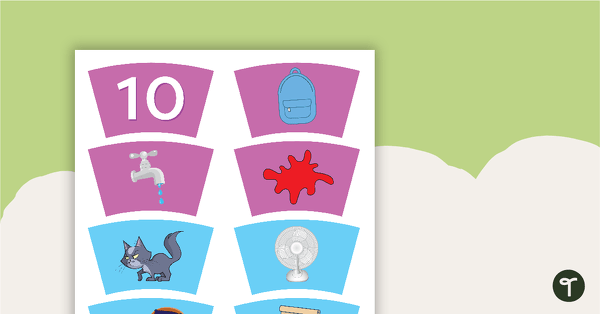
Classsroom Spinner Template - CVC Words
Classroom spinner template focusing on CVC words.
- Plus Plan
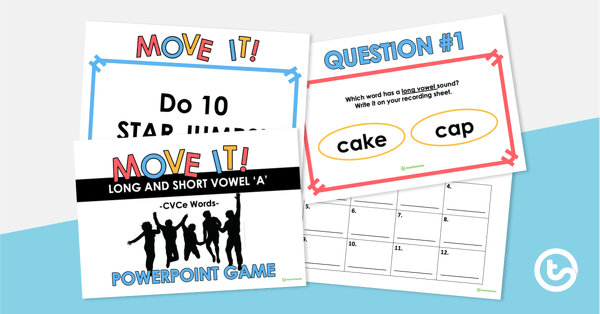
Move It! – Long and Short Vowel 'a' PowerPoint Game
An active PowerPoint game to practise reading and identifying long and short vowel 'a' words.
- Plus Plan
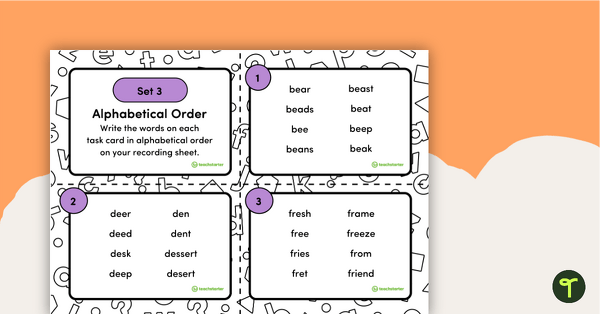
Alphabetical Order Task Cards – Set 3
A set of 11 task cards alphabetising a series of words to the third letter.
- Plus Plan
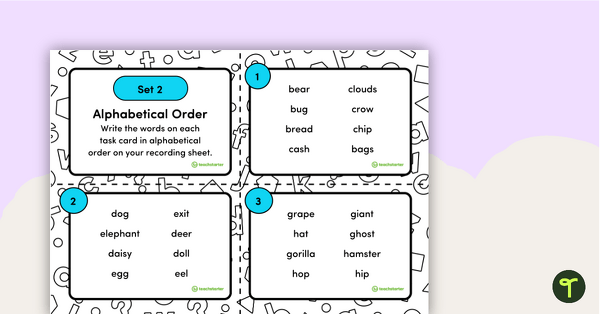
Alphabetical Order Task Cards – Set 2
A set of 11 task cards alphabetising a series of words to the first and second letters.
- Plus Plan

Word Building Picture Reveal PowerPoint
An interactive PowerPoint that will energise your classroom word building activities.